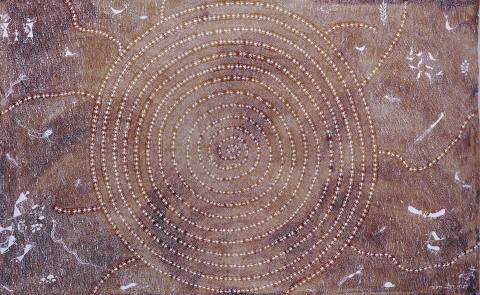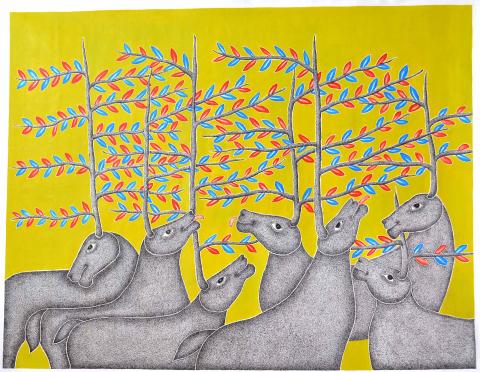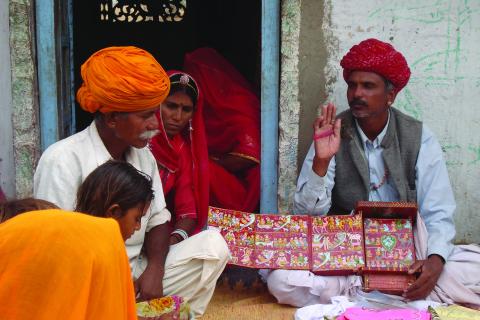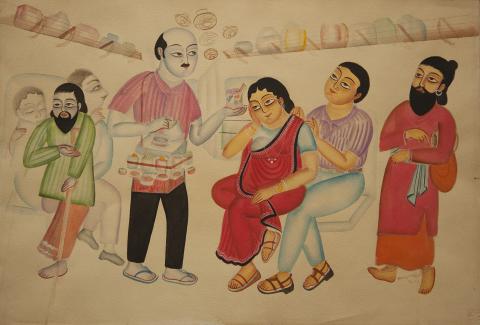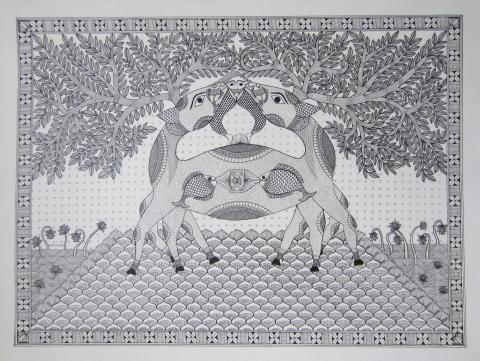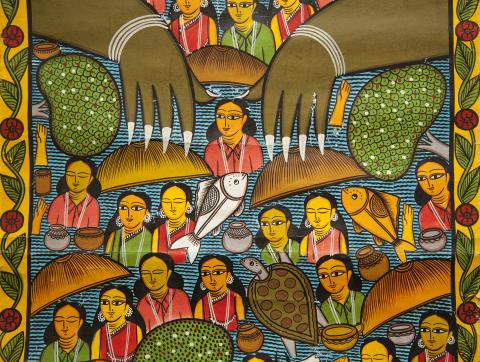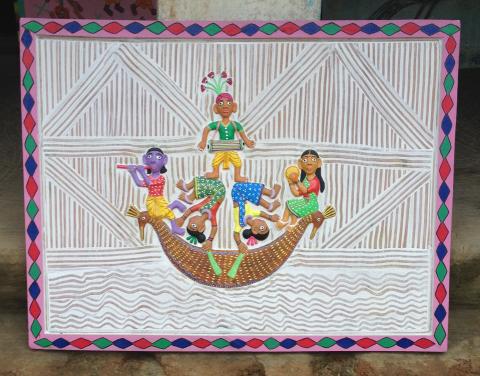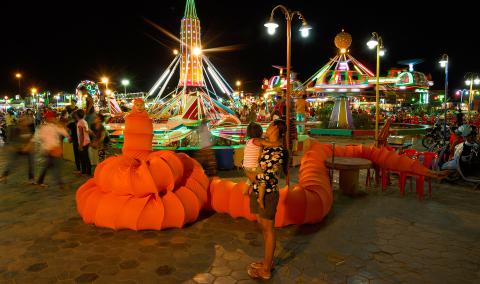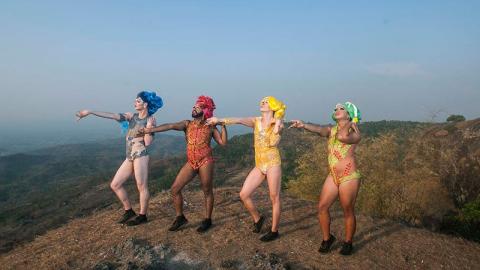Kalpa Vriksha
Contemporary indigenous and vernacular art of India
Developed for APT8 with assistance from Minhazz Majumdar
Several hundred indigenous and rural-based communities exist in India, varying greatly in ethnicity, culture and language. Developed in collaboration with Delhi-based curator, Minhazz Majumdar, this focus project explores some of the diverse artistic traditions that have survived and evolved from these regions. Kalpa Vriksha is a Sanskrit term for a divine or wishfulfilling tree. Mentioned in scriptures, it is also used to describe living, sacred trees, traversing boundaries between the everyday and the mythical, ancient and contemporary. Communities such as the Warli, Gond, Patachitra scroll painters and Mithila artists are known for vibrant visual techniques with ancient histories, while Kalighat painting and clay sculpture from the Rajwar community have developed as part of daily vernacular life and belief. Phad painting and Kaavad shrines are part of story-telling traditions drawing on song and performance.This project considers some of the most exciting and experimental artists working with the knowledge of these traditions today, capturing how traditional iconography and techniques have developed and how artists are using new styles to explore contemporary issues.
